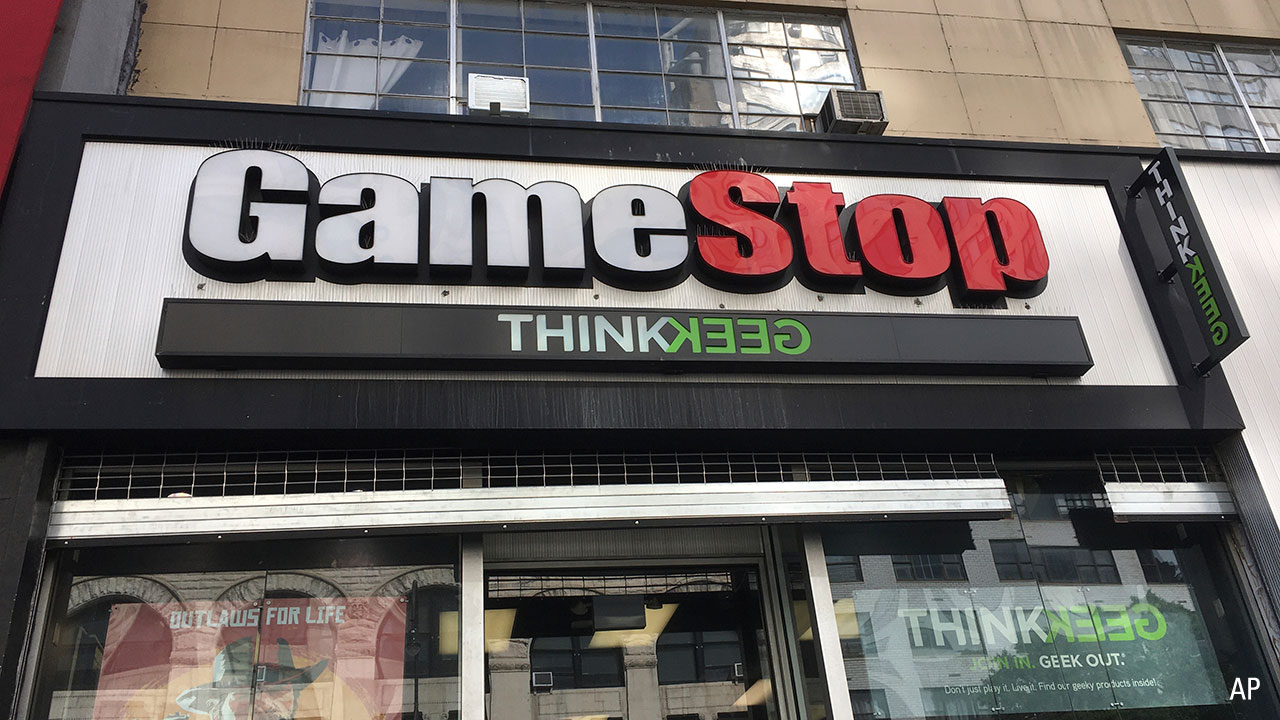
Short-selling is back in the spotlight with the recent reddit 'squeeze' on stocks like GameStop (GME) and AMC Entertainment (AMC). How does it work?
Shorting is when you effectively bet against a company. Instead of buying its shares and hoping their value rises, you take a reverse position whereby you profit if the shares fall.
Fund managers often use short-selling to manage risk in their portfolios rather than to just profit from short-term falls in share prices. Professional investors can often use a derivative such as a contract for difference (CFD), which allows them to close or “cover” the trading position when the shares have risen by a certain amount.
James Clunie, who used to manage the UK-based Jupiter Absolute Return fund, says the theory behind short-selling is relatively straightforward: “It’s simply the expression of a negative view on the price of an asset.” He looks for companies that look overvalued or whose shares could be about to fall - what he calls a company’s “fragility”. This is based on fundamental analysis of the company’s finances rather than a hunch that it’s about to put out some bad news. “I have an idea of what it’s worth and why it should go down,” Clunie says.
As an example, Clunie has publicly stated his negative view of US technology and car firm Tesla (TSLA). As a result of this bet, Clunie stepped down from Jupiter, following the underperformance of his fund.
Clunie describes Tesla as both a “trading story” and a “fundamental story”. The first part of this means that he can take advantage of the flurry of ongoing news coverage on Tesla. But Clunie also has a “fundamental” view that Tesla is overvalued, having been through the company’s accounts. But analyst Dave Whiston says the latest results are a reminder of the risk and uncertainty faced by investors in Tesla.
Michael Browne, a portfolio manager on the UK-based Martin Currie European Long/Short strategy, says that fund managers who use short-selling have to be very vigilant. Buy-and-hold managers often say that the most they can lose on an investment is 100% while the amount they can make is unlimited; in short-selling the opposite is true. Browne says: “The most profit you can make out of a short is 100% and the most you can lose is infinity.” Rather than aiming for a 50% fall in a share price he adds, a manager would regard a 20-25% loss as a “big success”.
Browne outlines that there are usually three factors involved in a short: cyclical, structural and management. Cyclical problems are easier to manage, as companies can ride out the problems eventually – an example would be retail. Structural issues could include balance sheet problems and they can be harder to fix. Managerial problems can compound financial problems. The “perfect short” would involve a combination of all three, he says.
But often, Browne explains, there are companies that are going through a rough patch that will depress their share price in the short-term. These firms can often then end up on the “long” list once their problems are sorted and they don’t end up like, say Carillion, whose share price collapse heralded a terminal decline in the business.
How Does it Work?
There are many misconceptions about what short-selling or “shorting” is and why it is used.
In its most basic form short-selling involves selling an asset you don’t own to make a profit from the fall in its price. This could be a share, a commodity or currency. It’s usually associated with hedge funds, which gain publicity by moving the share price of a company by betting it will fall. Recently, traders have been “shorting” sterling as the threat of a no-deal Brexit increases.
A trader doesn’t own the assets they are selling; they borrow them from specialist firms and sell those shares at the current market price. Clunie describes these firms as the “plumbers” of the short-selling business.
If the trade is successful, the trader then buys the shares back at a lower price and returns the borrowed shares back to the lender. If the share price has risen the position is “covered” or closed. The more distressed a company is, the higher the cost of borrowing its stock but often the biggest gains are made just before a company goes under, Browne says. As an example, if you short a stock that goes from $20 to $4, the trader has made an 80% gain, but if it goes from $4 to $0 they have made a 100% return. Shorting companies with a smaller market cap can be more expensive than bigger companies, Browne explains, because the stock you are borrowing is a bigger percentage of its available share capital.
Risks to Short-Sellers
Value investor Benjamin Graham said of investing that “in the short run, the market is a voting machine but in the long run, it is a weighing machine.” There are plenty of opportunities for short-sellers to “vote” in current markets – these include IPOs with sky-high expectations, volatile stock, bonds and currencies, and a US President who can move markets with his tweets. Burford Capital, whose shares plunged 65% on one day after a short-selling attack, noted that some trading desks’ computer programs can trigger sell signals on Twitter phrases such as “insolvent”.
In the case of Carillion, short-sellers were on the right side of the trade as the company veered into bankruptcy. But they can also get it wrong and companies can recover. Private equity buyers present a risk to short-sellers – when a company is in distress it can be taken private again and de-listed, rather than going bust. Companies in difficulty can also turn themselves around and see their share price bounce back sharply after a restructuring. A strong recovery in a share price can lead to a “short-squeeze” that forces sellers to close their positions.
What about the ethics of short-selling? Martin Currie’s Browne says that short-sellers are just “messengers” and can often alert company managers to problems that can be fixed. He even urges companies to meet their short-sellers – “used cleverly, companies can learn a lot from short-sellers”, he says.
How Exposed Is Your Equity?
Get The Global Makeup Of Equity Indexes With Our Free Tool Here








:quality(80)/cloudfront-us-east-1.images.arcpublishing.com/morningstar/J23NAJUY3ZA6DL4H7A3HEVXXGU.jpg)












